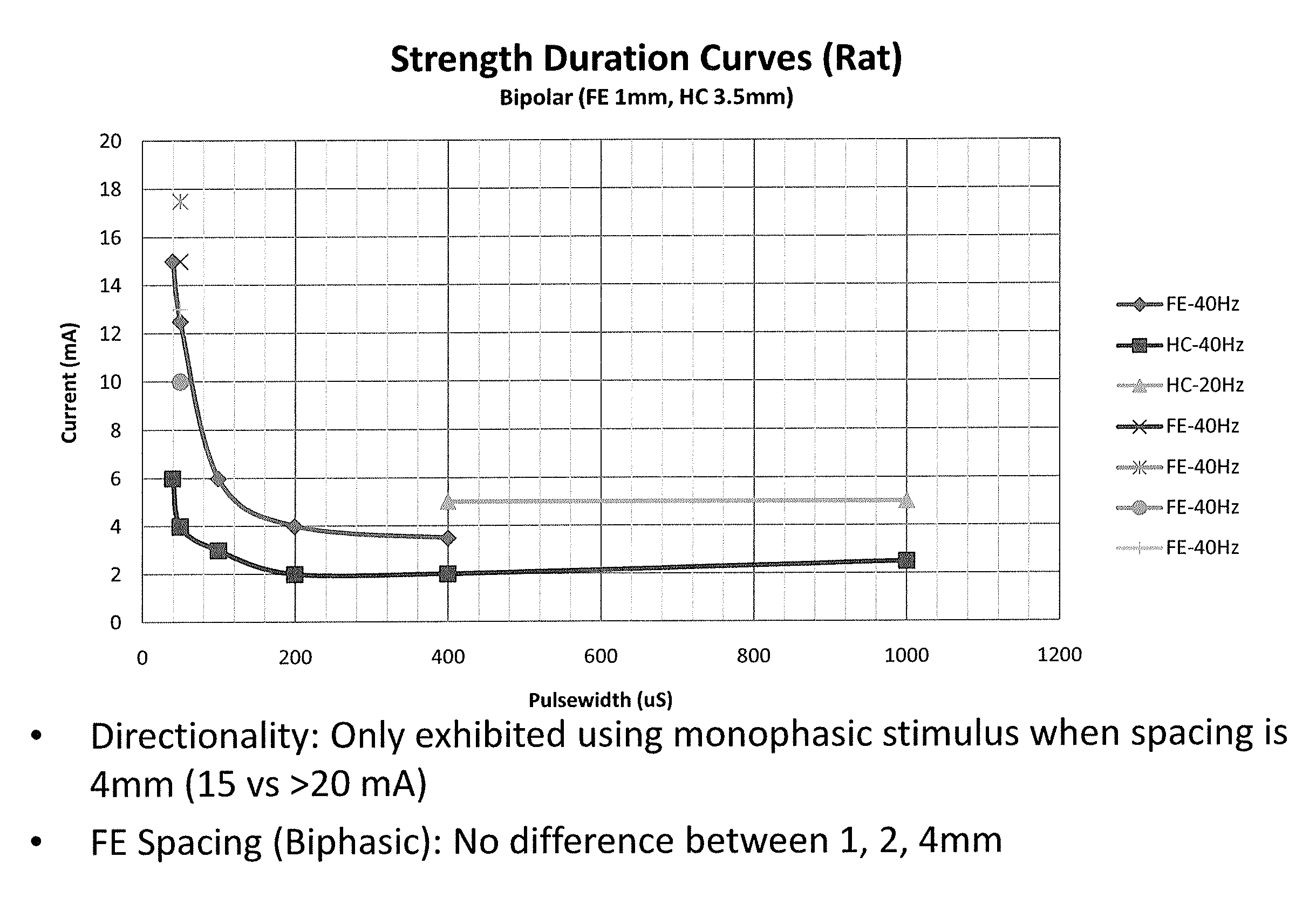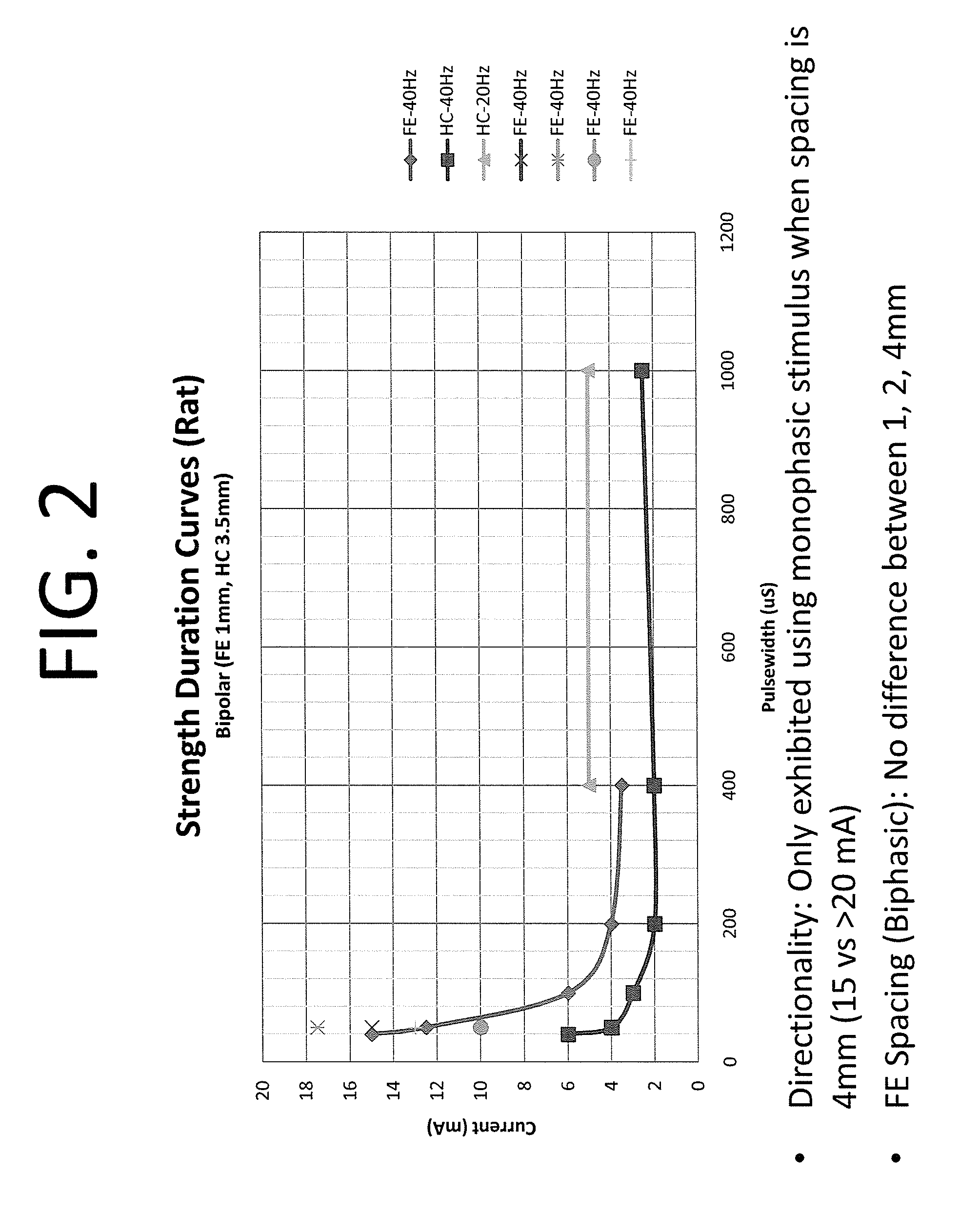Devices and methods for optimizing electrode placement for anti-inflamatory stimulation
a technology of electrode placement and anti-inflammatory reaction, applied in electrotherapy, therapy, etc., can solve the problems of inability to stimulate the inflammatory reflex, damage to its own tissues, inappropriate or unchecked,
- Summary
- Abstract
- Description
- Claims
- Application Information
AI Technical Summary
Benefits of technology
Problems solved by technology
Method used
Image
Examples
Embodiment Construction
[0032]Described herein are devices, systems, and methods for optimizing placement of one or more electrodes. For example, the position may be optimized to stimulate the inflammatory reflex and thereby inhibit inflammation, while minimizing or eliminating undesirable side effects. Side effects may include cardiac effects (depression or acceleration of heart rate, blood pressure or the like), dry mouth, muscle twitching or spasm, etc. Such side effects may result from stimulation artifacts, which may occur when stimulating nearby muscle, nerve or other organs, or may occur because of overstimulation. Although the devices, systems and methods for optimizing position described herein are primarily directed to optimizing stimulation of the inflammatory reflex (e.g., the vagus nerve), some of the devices, system and methods described herein may also be used to optimize the position of other body regions or systems.
[0033]As illustrated in FIG. 1, preliminary studies in rats using various e...
PUM
 Login to View More
Login to View More Abstract
Description
Claims
Application Information
 Login to View More
Login to View More - R&D
- Intellectual Property
- Life Sciences
- Materials
- Tech Scout
- Unparalleled Data Quality
- Higher Quality Content
- 60% Fewer Hallucinations
Browse by: Latest US Patents, China's latest patents, Technical Efficacy Thesaurus, Application Domain, Technology Topic, Popular Technical Reports.
© 2025 PatSnap. All rights reserved.Legal|Privacy policy|Modern Slavery Act Transparency Statement|Sitemap|About US| Contact US: help@patsnap.com



